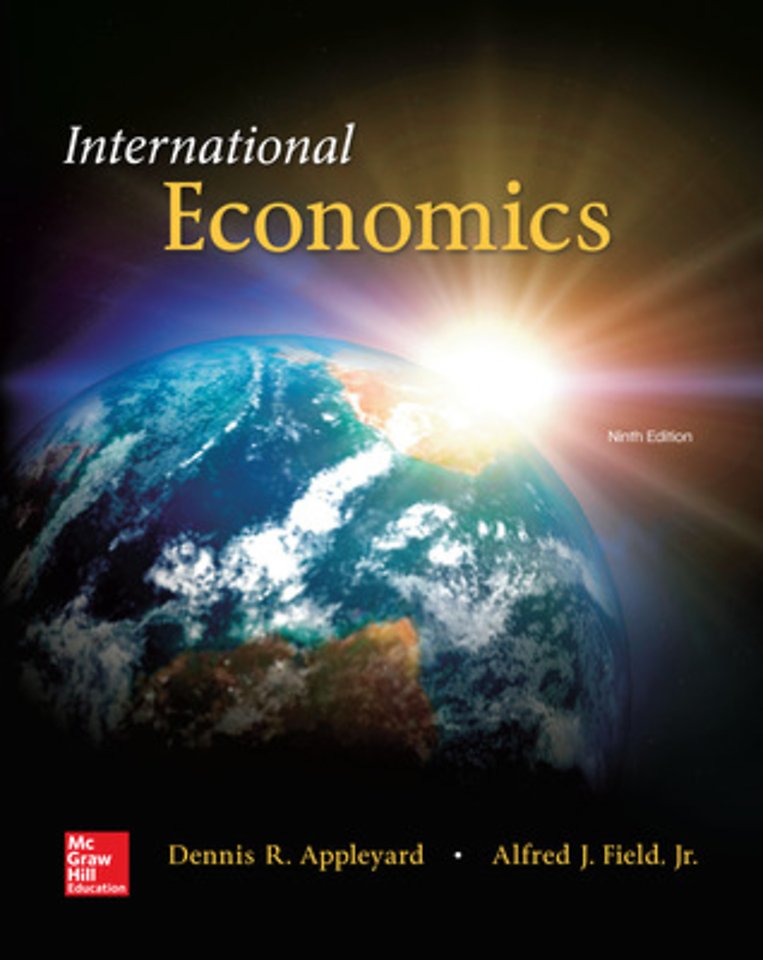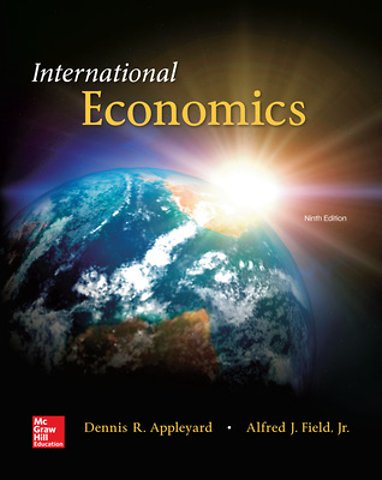<p><STRONG>CHAPTER 1</STRONG><BR>The World of International Economics, </P><p><EM><STRONG>PART 1 THE CLASSICAL THEORY OF TRADE</STRONG></EM> </P><p><STRONG>CHAPTER 2</STRONG><BR>Early Trade Theories: Mercantilism and the Transition to the Classical World of David Ricardo</P><p><STRONG>CHAPTER 3</STRONG><BR>The Classical World of David Ricardo and Comparative Advantage</P><p><STRONG>CHAPTER 4</STRONG><BR>Extensions and Tests of the Classical Model of Trade </P><p><EM><STRONG>PART 2 NEOCLASSICAL TRADE THEORY</STRONG></EM> </P><p><STRONG>CHAPTER 5</STRONG><BR>Introduction to Neoclassical Trade Theory: Tools to Be Employed, </P><p><STRONG>CHAPTER 6</STRONG><BR>Gains from Trade in Neoclassical Theory</P><p><STRONG>CHAPTER 7</STRONG><BR>Offer Curves and the Terms of Trade</P><p><STRONG>CHAPTER 8</STRONG><BR>The Basis for Trade: Factor Endowments and the Heckscher-Ohlin Model</P><p><STRONG>CHAPTER 9</STRONG><BR>Empirical Tests of the Factor Endowments Approach </P><p><EM><STRONG>PART 3 ADDITIONAL THEORIES AND EXTENSIONS</STRONG> </EM></P><p><STRONG>CHAPTER 10</STRONG><BR>Post–Heckscher-Ohlin Theories of Trade and Intra-Industry Trade</P><p><STRONG>CHAPTER 11</STRONG><BR>Economic Growth and International Trade</P><p><STRONG>CHAPTER 12</STRONG><BR>International Factor Movements</P><p><EM><STRONG>PART 4 TRADE POLICY</STRONG></EM> </P><p><STRONG>CHAPTER 13<BR></STRONG>The Instruments of Trade Policy</P><p><STRONG>CHAPTER 14</STRONG><BR>The Impact of Trade Policies</P><p><STRONG>CHAPTER 15</STRONG><BR>Arguments for Interventionist Trade Policies</P><p><STRONG>CHAPTER 16</STRONG><BR>Political Economy and U.S. Trade Policy</P><p><STRONG>CHAPTER 17</STRONG><BR>Economic Integration</P><p><STRONG>CHAPTER 18</STRONG><BR>International Trade and the Developing Countries</P><p><EM><STRONG>PART 5 FUNDAMENTALS OF INTERNATIONAL MONETARY ECONOMICS</STRONG></EM> </P><p><STRONG>CHAPTER 19</STRONG><BR>The Balance-of-Payments Accounts</P><p><STRONG>CHAPTER 20</STRONG><BR>The Foreign Exchange Market</P><p><STRONG>CHAPTER 21<BR></STRONG>International Financial Markets and Instruments: An Introduction</P><p><STRONG>CHAPTER 22</STRONG><BR>The Monetary and Portfolio Balance Approaches to External Balance</P><p><STRONG>CHAPTER 23</STRONG><BR>Price Adjustments and Balance-of-Payments Disequilibrium</P><p><STRONG>CHAPTER 24</STRONG><BR>National Income and the Current Account</P><p><EM><STRONG>PART 6 MACROECONOMIC POLICY IN THE OPEN ECONOMY</STRONG></EM> </P><p><STRONG>CHAPTER 25<BR></STRONG>Economic Policy in the Open Economy under Fixed Exchange Rates</P><p><STRONG>CHAPTER 26<BR></STRONG>Economic Policy in the Open Economy under Flexible Exchange Rates</P><p><STRONG>CHAPTER 27</STRONG><BR>Prices and Output in the Open Economy: Aggregate Supply and Demand</P><p><EM><STRONG>PART 7 ISSUES IN WORLD MONETARY ARRANGEMENTS</STRONG></EM> </P><p><STRONG>CHAPTER 28</STRONG><BR>Fixed or Flexible Exchange Rates? </P><p><STRONG>CHAPTER 29<BR></STRONG>The International Monetary System: Past, Present, and Future</P><p><BR> </P>

